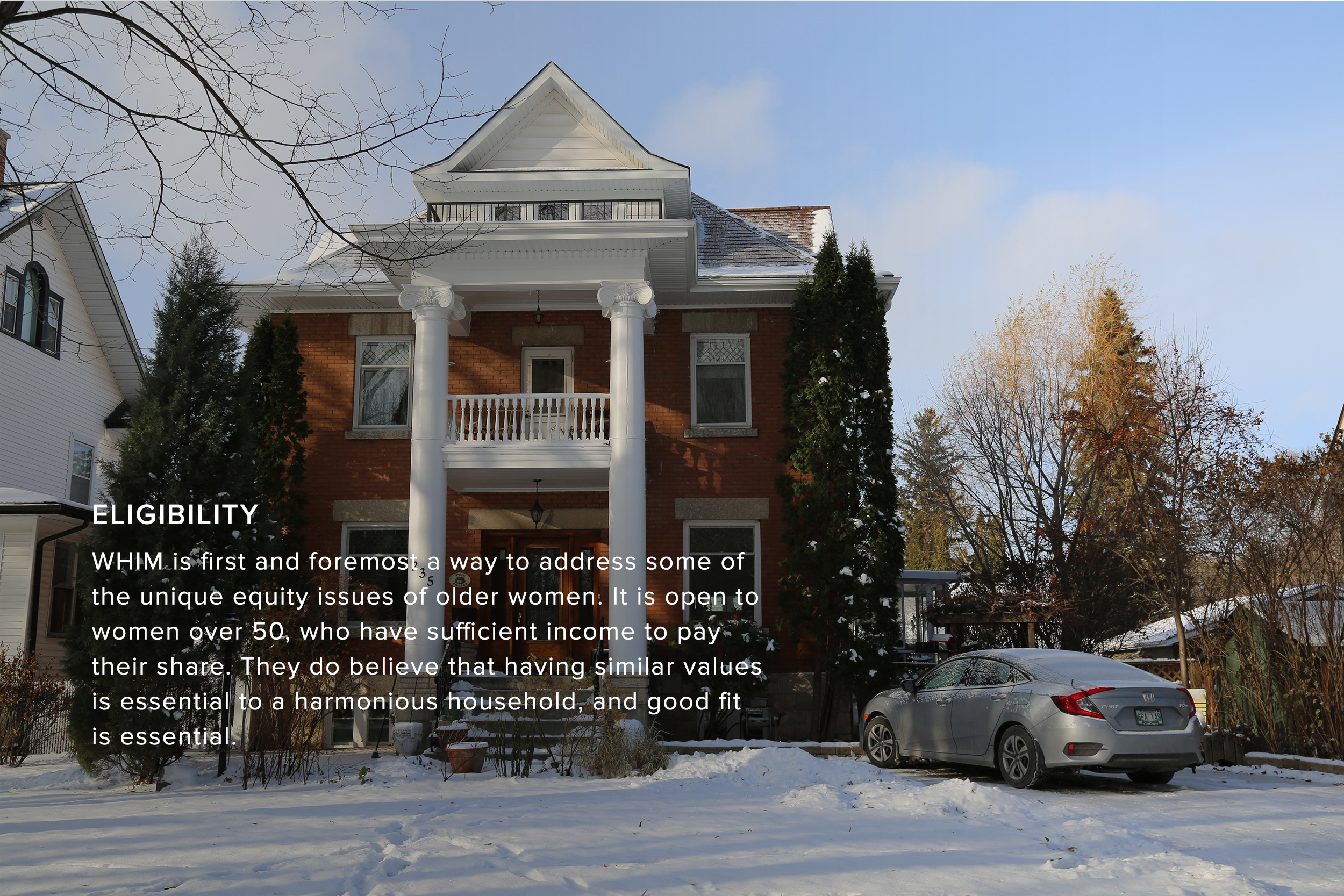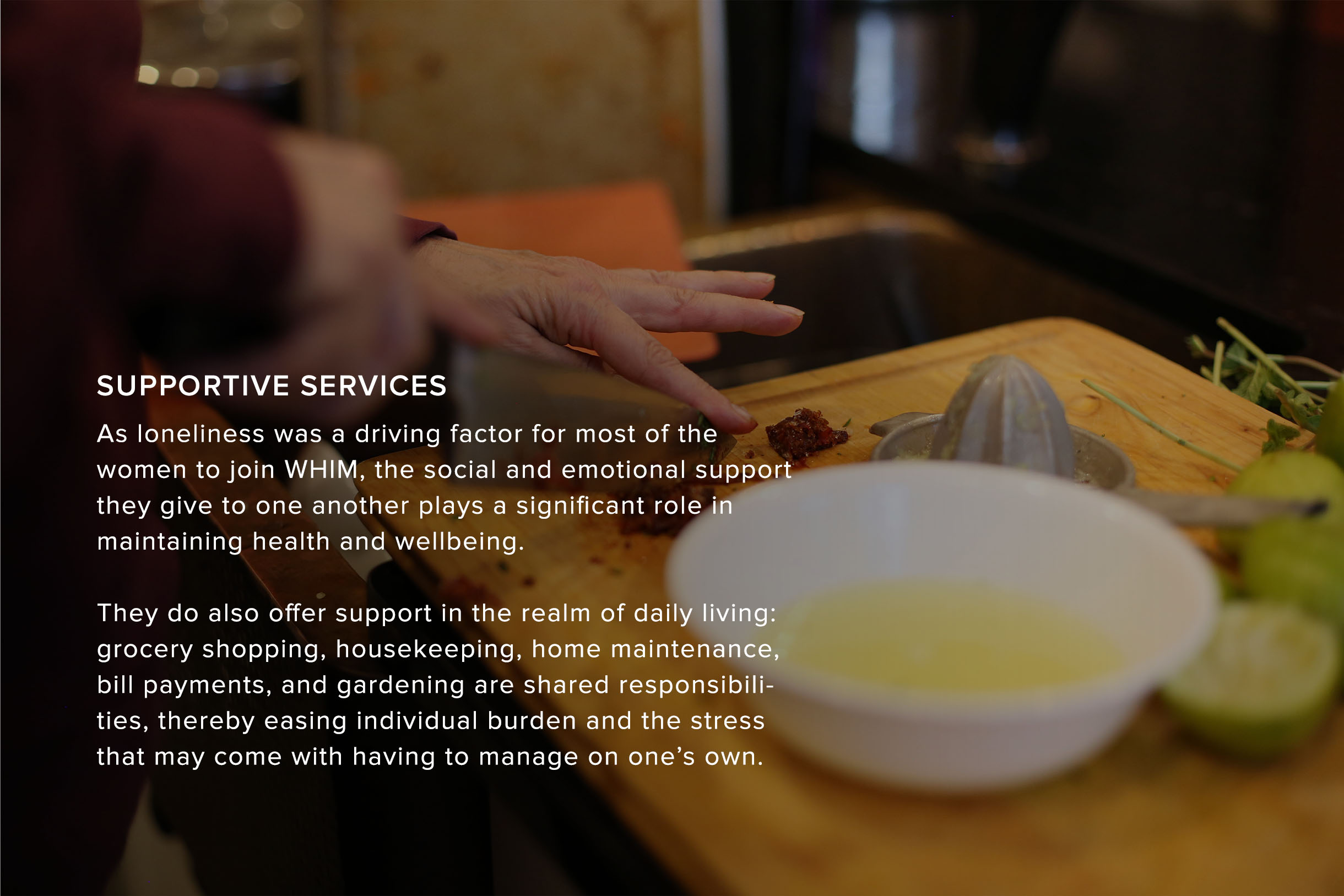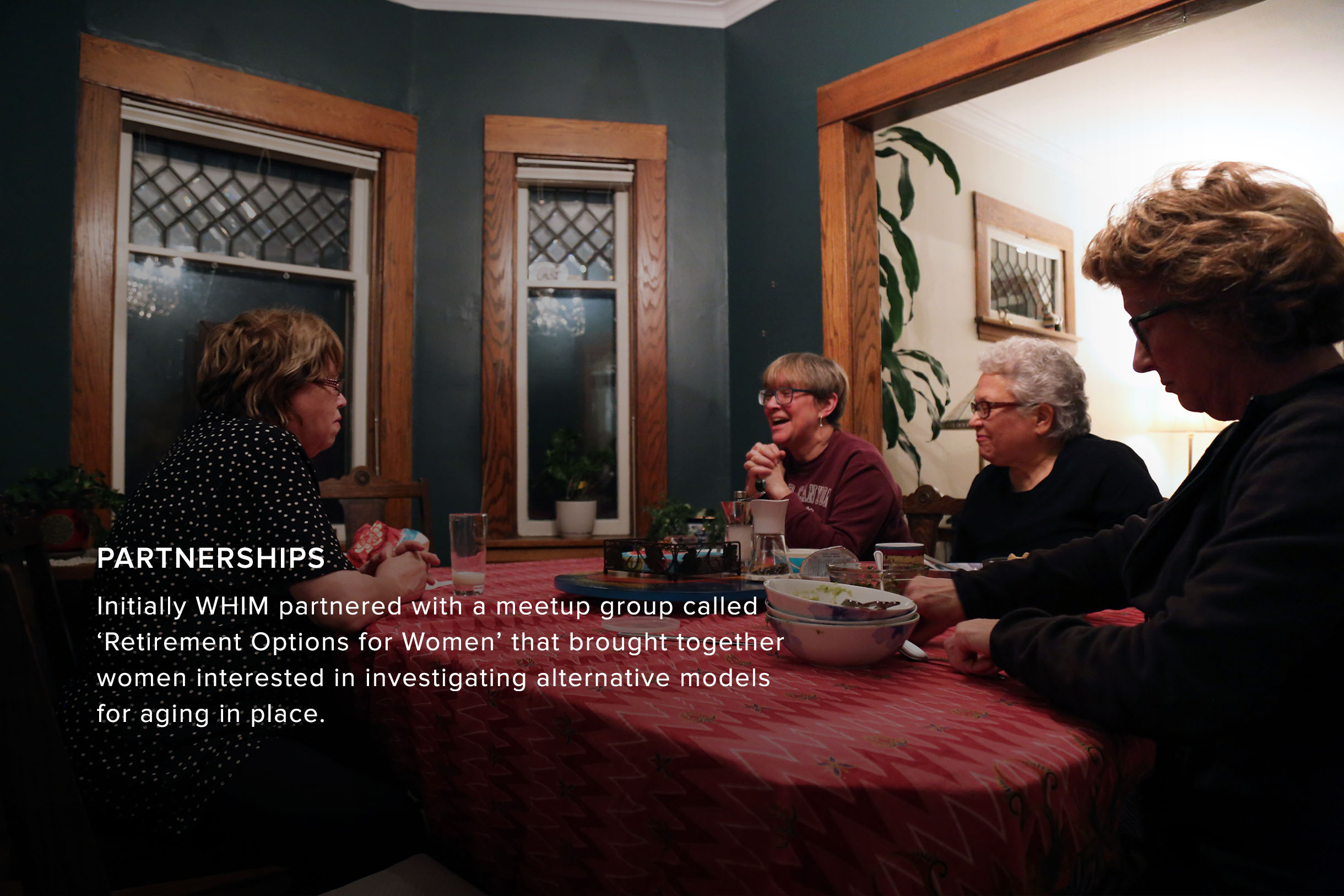“When I lived alone I was spending much more on food. Sharing the cost of food, hydro, heat, is more affordable. I was ok, but I couldn’t travel. I haven’t seen my family in Brazil for 15 years. There is always something happening that I need to take care of, like my teeth. I think I am saving about $500 a month living here. I used to go out and eat all the time, because I didn’t feel like cooking for one. I don’t have to go out now; there are meals.”
HOMESHARING
Homesharing as a seniors’ supportive living concept was originally developed to connect older adults living alone, who have extra space in their home, with people who need affordable housing. Much like traditional roommates, residents share common areas, but have their own private bedrooms. However, unlike traditional roommate situations, there is a formal agreement to help seniors with the things they need to stay living in their own homes.
Currently, there are two main models of homesharing: the first is geared towards intergenerational support, and is typically made up of seniors and university students. The elder homeowner receives help with the chores they can no longer perform and receive a boost in income, while the younger homeseeker gains access to affordable accommodation in an area that might not have been otherwise available, as well as a sense of home life and security.
The second model consists of a peer-to-peer relationship that involves individuals closer in age moving in together and forging a 'partnership in aging'. This typically involves a homeowner seeking out people to rent one or more of their extra bedrooms. A formal agreement is drawn up that outlines governance structure, expectations of mutual support, shared costs and responsibilities, and other household policies.
DRAWBACKS
- Decreased Privacy: Sharing a home means less privacy, as well as compromising with each other’s preferences and habits.
- Compromise: consensus decision-making may be difficult or undesirable for people used to living alone. Housemates’ expectations with regards to mutual support may be more or less than desired.
- Potential for uneven power dynamic: homeowner may have more actual or perceived power over household decisions due to the ownership/lease resting with them.
BENEFITS
- Affordability: roommates share household duties such as cleaning, home repair, meals and groceries, and pet care, etc. In the case of intergenerational sharing, this may take the form of a bartered exchange for reduced rent.
- Autonomy: Seniors remain in control of the type and intensity of support they receive with housemates acting as informal caregivers who offer support with daily living.
- Built-in Network of Support: Emotional or social support offered by housemates.
CASE STUDY: WOMEN'S HOUSING INITIATIVE MANITOBA (WHIM)
WINNIPEG, MB
The Women’s Housing Initiative Manitoba is a grassroots homesharing initiative for older women who want to age in place with other older women. Their goal is to offer shared housing for women who are retired, or nearing retirement, and living on a low to moderate fixed income. More significantly, they want to help alleviate seniors’ social isolation by creating an intentional community of women who care about and for one another, and who work together to prevent the need for institutional living.
WHIM is located in south-central Winnipeg close to the Assiniboine River. It is housed in a large three-story brick home, with 5 bedrooms, 3 bathrooms, 2 living rooms, and 2 guest rooms in the basement. Currently there are four women who share the home, who span in age from 58 to 71.
As most of the women are currently on the younger side of elderhood, they do not have many needs in terms of health care supports at this time. However, the group has developed protocols for how they might care for one another as they age – for example, how much personal care they are willing to give and receive from one another; what types of modifications they might need to make to the property to remain aging in place. Most of the support at this stage remains in the realm of social connection, companionship and emotional support.
BEV
Like many older adults of her generation, Bev Suek had been through the experience of putting her mother into long-term care, and did not like what she saw: an institutional environment with little ability to make your own decisions. Instead of waiting for the system to change, she decided to build her own alternative.
kATHERINE
Katherine Lowery had been living alone and found herself becoming increasingly reclusive. She spent most of her days watching TV. She loved her house, but it was becoming too much to manage on her own. When she heard about WHIM she immediately loved the idea. She says she's “come alive” living here.
A Day In The Life
(scroll through)















